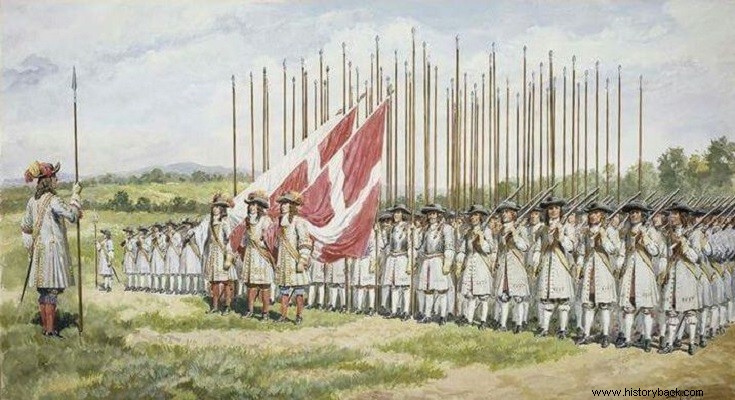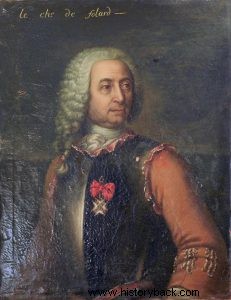
Jean Charles chevalier (knight) de Folard is a completely unique figure in military history and the art of war. He was born in 1669 in Avignon, France. In adolescence, only 16 years old, having read Julius Caesar's "On the Galatians" and "On the Civil War", he ran away from home and enlisted in the French army of King Louis XIV.
He was assigned to one of the oldest French infantry regiments. At the age of 22, when the War of the League of Augsburg (Nine Years War) broke out he was a probationary officer and a year later he was named second lieutenant.
In 1699 he was a lieutenant while with the outbreak of the new war, that of the Spanish Succession, he was sent to Italy as aide-de-camp to Marshal Vendome. He distinguished himself in the battle of Cassano (1705), where he was severely wounded and later at the bloody battle of Malplaquet , in 1709.
At the end of the war he fought with the knights of Ag. John of Malta against the Turks and then joined the Swedish army of Charles XII. In 1719 he fought against the Spanish (War of the Quadruple Alliance).
It was during this period that he began his theoretical research on martial art which he began to write as comments on the work of the ancient Greek historian Polybius . His works were published in 1724 and 1727.
Folar's "prophecies"
Folar was a follower of the attacking doctrine. However, he considered that the linear tactics that were in use at that time did not provide the necessary impact power to break up and destroy the enemy . For Follar, real power came from the "weight" of a formation, from its depth and coherence.
The sides had to be as strong as the front. The great depth ensured and prevailed against any opponent standing on a fine line. To compensate for the reduced length of front of the infantry battalions due to their deployment in depth, Follar proposed the deployment of brigades consisting of six infantry battalions each, battalions in deep formation.
Each battalion would have a strength of 500 men, of which 100 would carry saris and the rest muskets with bayonets. These battalions, on level ground, would line up with a front of 20-30 men and a depth of 16-25 yoke. /strong>
In difficult terrain the depth could reach 60 fathoms. This deep phalanx formation would aim to break up the enemy front. At that time the infantry deployed in formations no more than 5 men deep (usually 3 or 4).
Consequently, a phalanx that by definition moves faster than the line, with little risk of losing its cohesion, could indeed easily break the enemy lines, given the limited effectiveness of the firearms of the time, the muskets.
Between the battalions Follar predicted gaps. The sarissaphoros were positioned relatively forward, advancing their sarissas, while the elite grenadiers remained out of formation covering the gaps between the battalions or kept behind each phalanx as an elite exploitation reserve.
Thanks to their depth and armament the battalions dreamed of by Follar were not in danger from enemy cavalry. In the event that the phalanx was flanked by opposing infantry, the battalion could be "broken" in two, with the second section covering the flank and the first fighting in front.
Desiring the close cooperation of infantry and cavalry Follar suggested deploying an army in two battle lines 200 m apart. Each line would consist, successively, of infantry and cavalry brigades, like the white and black squares of a chessboard.
In the second line behind the infantry would be cavalry and behind the cavalry infantry. The flanks of the whole arrangement would cover infantry phalanxes.
In this way the whole army would be a huge one, powerful piston able to crush, at a pre-selected point on the front, the enemy divisions, achieving a breach, without worrying about the safety of his flanks.
It also provided for the direct support of cavalry units by infantry platoons. Follar was not a fan of fire superiority. He believed, like other generals before and after him, that the threat of the lance paralyzed the enemy and forced him to flee.
His ideas were never implemented in his time. However, the attack phalanxes that he proposed gave, a few decades later, great victories to the armies of the French Revolution and Napoleon. After all, nothing comes from parthenogenesis in history.
It is worth noting that he was honored, in 1750, by the British, that is, by his old enemies, shortly before he died forgotten by his homeland in 1752.

